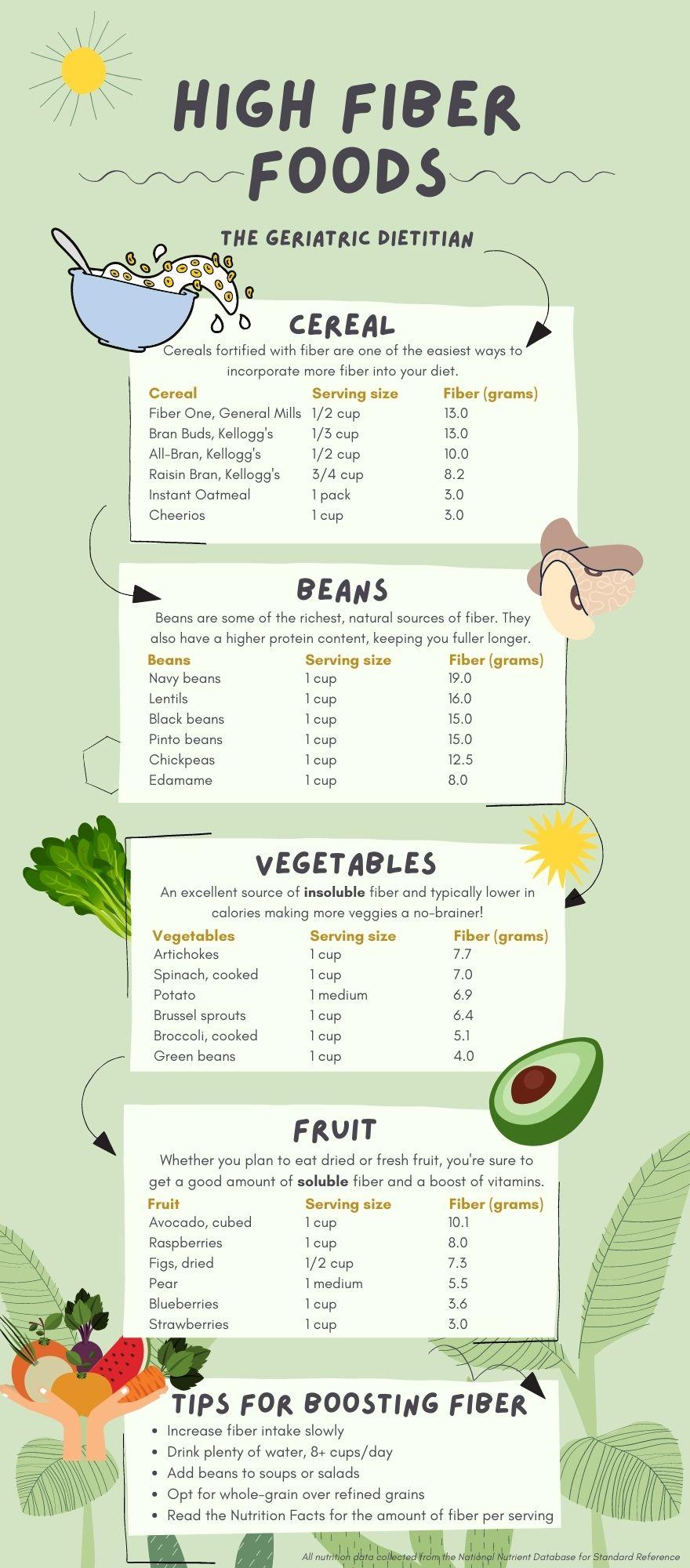In the bustling world of nutrition, where kale smoothies and chia puddings reign supreme, the high-fiber diet has carved out a celebrated niche. Lauded for its myriad health benefits, from improved digestion to reduced risk of chronic diseases, fiber is often hailed as the unsung hero of the culinary world. But amidst the accolades and endorsements, a curious question lingers in the background: is a high-fiber diet truly a one-size-fits-all solution? As we delve into the depths of dietary fiber, exploring its diverse sources and the unique ways it interacts with our bodies, we aim to uncover whether this nutritional powerhouse is suitable for everyone or if there are exceptions lurking beneath its wholesome facade. Join us on this exploratory journey as we navigate the complex terrain of high-fiber diets, separating fact from fiction, and personalizing the path to optimal health.
Understanding the Benefits and Challenges of High-Fiber Diets
High-fiber diets are often celebrated for their myriad health benefits, which include promoting digestive health, reducing the risk of chronic diseases, and aiding in weight management. A fiber-rich diet can help maintain regular bowel movements, lower cholesterol levels, and control blood sugar. Incorporating foods like fruits, vegetables, whole grains, and legumes can enrich your daily intake and support a balanced lifestyle. Moreover, fiber can create a feeling of fullness, potentially curbing overeating and contributing to a healthier weight.
However, transitioning to a high-fiber diet is not without its challenges. Some individuals may experience bloating, gas, or cramping, especially if their current diet is low in fiber. It’s important to increase fiber intake gradually and ensure adequate hydration to minimize discomfort. Individuals with certain medical conditions, such as irritable bowel syndrome (IBS) or inflammatory bowel disease (IBD), may need to consult with healthcare professionals to tailor a fiber intake that suits their needs. It’s crucial to remember that while high-fiber diets can be beneficial, they are not a one-size-fits-all solution. Consider the following when adopting a high-fiber diet:
- Start slowly: Gradually increase fiber intake to allow your digestive system to adjust.
- Stay hydrated: Drinking plenty of water helps fiber work more effectively in the body.
- Listen to your body: Pay attention to how your body reacts and adjust accordingly.
- Seek professional advice: If you have health conditions, consult with a nutritionist or doctor.

Tailoring Fiber Intake to Individual Health Needs
When considering dietary fiber, it’s crucial to recognize that individual health needs can vary significantly. While high-fiber diets are often praised for their benefits, such as promoting digestive health and reducing the risk of chronic diseases, they may not be ideal for everyone. For some, particularly those with specific digestive disorders like irritable bowel syndrome (IBS) or Crohn’s disease, a high intake of certain types of fiber can exacerbate symptoms rather than alleviate them.
Tailoring fiber intake involves understanding your body’s unique responses and adjusting your diet accordingly. Here are a few considerations:
- Type of Fiber: Soluble fiber, found in foods like oats and apples, can be more gentle on the digestive system compared to insoluble fiber, which is prevalent in whole grains and vegetables.
- Gradual Increase: For those not accustomed to high fiber diets, a gradual increase can help prevent digestive discomfort.
- Hydration: Adequate water intake is essential when increasing fiber to help the body process it efficiently.
By personalizing fiber intake, individuals can optimize their diet to support their specific health goals while minimizing potential adverse effects.

Exploring the Myths and Facts About Fiber Consumption
- Myth: Everyone benefits equally from a high-fiber diet.
- Fact: While fiber is a crucial component of a healthy diet, its effects can vary based on individual health conditions and dietary needs. For instance, people with certain gastrointestinal disorders, like irritable bowel syndrome (IBS), might find high-fiber foods aggravate their symptoms. In such cases, it’s important to tailor fiber intake to personal tolerance levels, often under the guidance of a healthcare provider.
- Myth: All fiber is the same.
- Fact: Fiber is broadly categorized into two types: soluble and insoluble. Soluble fiber, found in foods like oats and apples, dissolves in water and can help lower glucose levels and cholesterol. Insoluble fiber, found in whole grains and vegetables, helps food move through the digestive system and is beneficial for those who struggle with constipation. Balancing both types is key to achieving the full spectrum of fiber’s health benefits.

Practical Tips for Incorporating Fiber into Your Daily Routine
Integrating more fiber into your diet doesn’t have to be a daunting task. With a few simple adjustments, you can easily enhance your daily fiber intake and enjoy the myriad health benefits it offers. Here are some practical tips to get you started:
- Start Your Day with Whole Grains: Swap out refined breakfast cereals for options like oatmeal or whole grain toast. These choices are not only delicious but also rich in fiber, providing a great start to your day.
- Snack Smart: Keep high-fiber snacks on hand, such as raw veggies, nuts, or fruit. They are convenient, nutritious, and perfect for curbing hunger between meals.
- Incorporate Legumes: Add beans, lentils, or chickpeas to soups, salads, and stews. These legumes are fiber powerhouses and can elevate the nutritional profile of any dish.
- Bulk Up Your Meals with Vegetables: Make vegetables a central part of your meals. Whether it’s adding spinach to your omelet or tossing extra veggies into your pasta sauce, these small changes can significantly increase your fiber intake.
- Experiment with Whole Grains: Try incorporating quinoa, barley, or bulgur into your meals instead of white rice or pasta. These whole grains are not only versatile but also packed with fiber.
Remember, when increasing your fiber intake, it’s important to do so gradually and drink plenty of water to aid digestion. By making these small, sustainable changes, you can effortlessly weave more fiber into your everyday routine.

